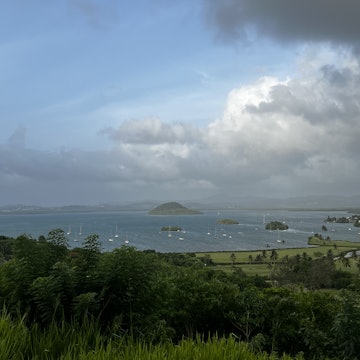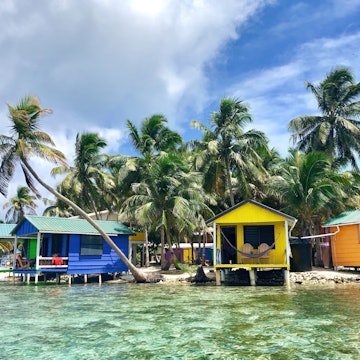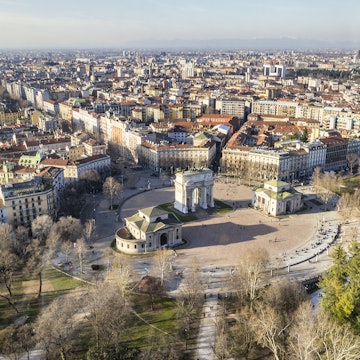
48 hours in Nagasaki: a diverse city's powerful character
Jun 6, 2018 • 6 min read

Nagasaki is a dynamic city, with memories of a painful past as well as a vibrant, diverse present. tomophotography / Getty images
There is no denying that Nagasaki’s intense and turbulent history has forever marked it as a distinct destination. And while taking a journey there grants visitors an important opportunity to learn first-hand about the city’s previous struggles, today travellers will also find it to be a vibrant and compelling location full of diverse charm, with a modern energy that embraces the past while looking toward the future.
With so much on offer, here’s how to make the most of two days in one of Japan’s most dynamic destinations.
Day One: Morning
Start your adventure off right by grabbing some deliciously soft and springy pork dumplings from the Shianbashi branch of Butamon Momotaro, a family-run Nagasaki institution that opened its first store in 1960, and now boasts five popular locations across the city.
From there, you can hop a tram bound for Matsuyama-Machi, using the time to relax and take in the sights of the city as you make your way towards the Nagasaki Atomic Bomb Museum, located right beside the stop. An essential experience, the sombre museum offers a stark and gripping account of the destruction that befell the city on 9 August 1945 when the bomb was dropped, as well as the aftermath.
Displays include artefacts and relics from the time, such as pieces of twisted shrapnel, crumbled rubble, photographs, furniture and pottery found in the ruins, as well as a clock stopped at 11.02, the exact time of the bombing. Video displays show moving, first-hand accounts from survivors, while educational exhibitions offer information on today’s nuclear landscape.
Adjacent to the museum lies the Nagasaki National Peace Memorial Hall for the Atomic Bomb Victims, which consists of an upper level with a sculptured water basin and two underground levels, one of which contains 12 glass pillars with shelves of books of the names of the deceased. Visitors are encouraged to leave messages of peace, which are maintained by the hall.
After that, it’s a short stroll to Sakanaya, a restaurant that specialises in kaisen-don (rice bowls topped with amazingly fresh assorted sashimi) and offers interesting and delicious set lunches that include cuts of hamachi and boniti, as well as karaage (succulent Japanese fried chicken).

Day One: Afternoon
Stretch your legs and work off lunch by taking a walk through Peace Park to see the impressive 10-tonne bronze Nagasaki Peace Statue, designed in 1955 by Kitamura Seibō. A serene spot, especially on a sunny day, the park also includes a Fountain of Peace in the shape of a dove, as well as a sculpture garden.
Rounding off the experience and just a five-minute walk away is the Atomic Bomb Hypocentre Park. Here, a single black-stone column marks the exact point over which the bomb exploded, making it a truly chilling and unforgettable experience.
If you're still feeling contemplative, head across the river to Fuchi-jinja, a Shinto shrine at Inasa-yama, the impressive 333-metre high mountain located west of Nagasaki harbour.

Day One: Evening
As daylight gives way to dusk, taking the famous cable car to the top of Inasa-yama is the perfect way to get a true sense of the city. From this spectacular vantage point you have a near-panoramic view of Nagasaki, with the dancing lights of the urban grid bisected by the glistening waters of the harbour.
Having ventured so high, a visit to Onsen Fukunoyu (located on the mountain) is well worth it, and is the perfect way to unwind before heading back to the city. Here, visitors can try the standard wet baths, as well as the ganbanyoku hot stone spa.
After descending the mountain, finish your evening off by grabbing a taxi to Shippoku Hamakatsu to sample shippoku-ryōri, Nagasaki’s impressive banquet-style dinner that sees various courses being served on a large round table.

Day Two: Morning
Approximately 20 kilometres off the coast of Nagasaki stands Hashima Island (also known as Battleship Island or Gunkanjima, due to its unique shape that resembles a war vessel), a former deep sea coal-mining facility that at one time was home to thousands of workers, as well as prisoners of war that were controversially sent there as labourers.
In operation since the 1890s, Hashima was eventually abandoned in 1974 following depleted coal reserves. Today the island is an eerie ghost town, with a cluster of dilapidated buildings that have fallen victim to time and rough sea elements.
From April to October, two cruises to the island are offered by Gunkanjima Concierge, one in the morning (9:40 meeting) and one in the afternoon (12:40 meeting), leaving from the Tokiwa Terminal at Nagasaki Harbour. While it is very much worth a visit, forward planning is essential, with booking ahead being advised through the company’s website.
Before leaving, fuel up for the journey at Hotel Belleview, with a hearty breakfast buffet jam-packed full of local ingredients from across the prefecture. Japanese dishes include egg rolls and pork katsu, while western style items are also available. Pack sunscreen and water, and be sure to use the bathroom before departing the ferry terminal to explore Gunkanjima.
While much of the crumbling island is unsafe, guided tours operate along a renovated walkway, offering guests incredible views of the ruined architecture as they listen to the audio guides provided.
Day Two: Afternoon
Back at the terminal, you will definitely have worked up an appetite. Just five minutes away by foot is Japan’s oldest Chinatown, which offers a host of restaurants and food stalls that stretch down the street. Stop by Kairaku-en to sample the sumptuous cuisine, including champon, a famous Nagasaki noodle dish featuring pork, squid and vegetables in a milky, salty broth, as well as the rich, braised pork that is served up in steamed buns.
If you still have room for desert, stop by Fukusaya to try their vibrant yellow castella cake before heading towards the Dutch Slopes to take in some of the beautifully-restored architecture that offers glimpses of Japan’s early interest in the Western world. Continue on to Glover Garden, taking the moving walkways to the top of the hill and working your way back down again.
Call into the Mitsubishi No 2 Dock building, which boasts fantastic views of the harbour, while the historic Walker, Ringer, Alt and Glover Houses are also well worth a visit. Exit the garden through the Nagasaki Traditional Performing Arts Museum and look at the display of dragons and floats used in Nagasaki's colourful Kunchi Matsuri festival.
From there, work your way back towards the harbour, stopping at Dejima, the fan-shaped artificial island built in the 1640’s as the sole trading post for foreigners after the Tokugawa shogunate declared Japan a closed nation. A fascinating slice of history, seventeen buildings and structures have been reconstructed here into the Dejima Museum.

Day Two: Evening
Pull up a chair outside to wind down with a cold beer at Delicious Restaurant Attic at Dejima Wharf or opt for a pick-me-up in the form or a specialty coffee, which comes complete with an intricate latte art portrait of a famous historical figure.
For dinner, try Mugal Mahal nearby, an unassuming hidden gem serving incredible Indian food. Set meals come with flavourful aromatic curries, fresh salads, steaming pilau rice, juicy barbequed chicken and just-baked naan breads.
After dinner, it’s just a five-minute walk to Bar IWI, a cosy local watering hole that serves ¥500 drinks and stays open until 3am, allowing ample time to mingle with the friendly clientele consisting of locals and tourists alike.















